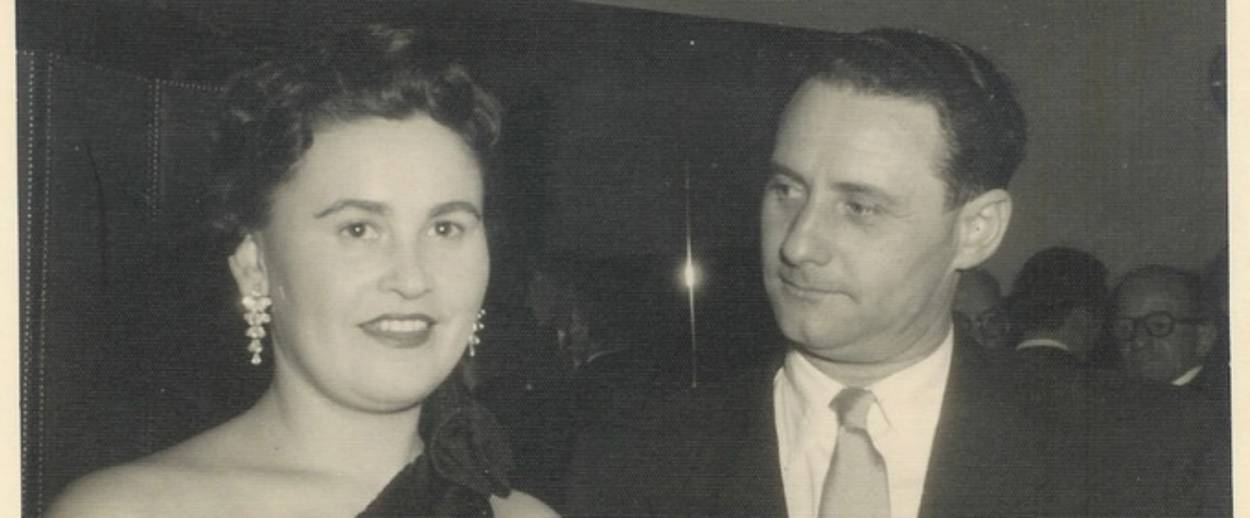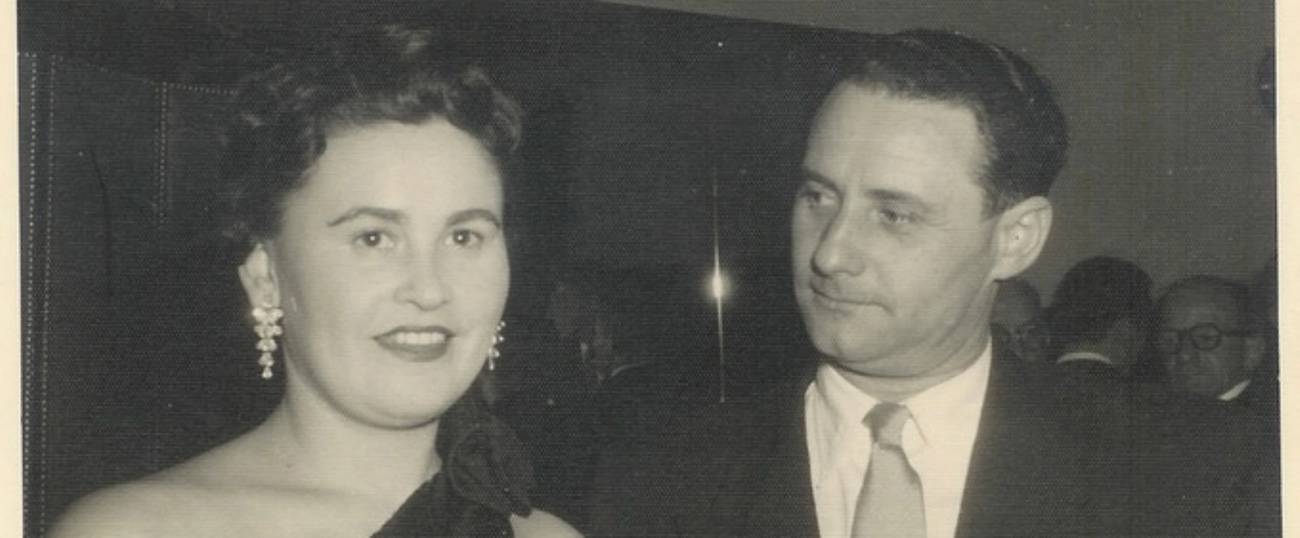Love in a Place of Death: ‘The Tattooist of Auschwitz’
An interview with Heather Morris, author of The Tattooist of Auschwitz




Heather Morris’ debut novel, The Tattooist of Auschwitz, is a harrowing true story at the intersection of life, love, and the camps.
Lale Solokov was born Ludwig Eisenberg to Jewish parents in Krompachy, Slovakia, in 1916. At the start of World War II, he was working in a department store in Bratislava when he learned that the Nazis planned to deport all the Jews from his hometown to Auschwitz. Upon hearing the news he left Bratislava and returned home where he offered himself to the local authorities as an able worker to save his family from deportation.
Lale arrived on one of the first transports to Auschwitz in 1942. He survived typhus, nursed back to health by Pepan, the Tätowierer, who took Lale under his wing teaching him the art of tattooing and how to keep his head down. One day Pepan disappeared, and Lale became the Tätowierer. The position came with additional food rations, his own small room, and the dubious protection of working for the Politische Abteilung (Political Department).
He summed up his time in Auschwitz like this: “If you woke up alive, it was a good day.” But it was also as the Tätowierer that Lale Solokov met the love of his life, Gita, while tattooing the number on her arm.
Morris, a retired hospital administrator, had been dabbling in writing when she first heard about Lale. I spoke to her at her home in Melbourne, Australia, via Skype about that first meeting and why she was the perfect person to tell this story.
You were an aspiring screenplay writer when someone said I know a man with a story to tell. What do you say to that?
Well, I said yes, thankfully! But it really was as simple as, “Oh, by the way, I have a friend whose mum’s just died and his dad’s asked him to find someone to tell a story to.”
How much did you know about the WWII era coming into the project?
I had a small country education in New Zealand. If the New Zealand army weren’t taking part in a battle during WWII, then it didn’t exist. Lale asked me, “What do you know of the Holocaust,” and I had to hang my head in shame. Of course, I knew it existed, and I’d read Anne Frank’s diary, but that was the beginning and the end of it. [My lack of knowledge] made me the perfect person for him to tell his story to because that’s what he wanted.
What was the first meeting like?
His wife had only died a few weeks earlier, and he was grieving terribly. He sat there with his head down most of the time. He was really rambling, going on about stories and vignettes and tales that had no connection or coherency one to the other, but I was hearing enough to know that this man is living history. He kept saying, “How quickly can you tell my story?” And I said, “Where do you need to be?” And he said, “I need to be with Gita.”
At what point did you know this was a story you were going to tell?
He had two dogs, a large one the size of a small pony and the other one smaller than my cat. Whenever we would sit talking, the animals would bring a tennis ball to him, and he’d toss it off over his shoulder, and they’d scamper off after it. One day about four months into our friendship, the big dog, Tootsie, came up with the tennis ball. Lale went to take it out of her mouth, and she growled at him. He smacked her and said, “Naughty Tootsie, give me the ball.” Tootsie growled again and then she put her head on my lap, and I took the tennis ball and threw it over my shoulder. Lale said, “My dogs like you. I like you. You can tell my story.”
Why did he keep his story a secret for so long?
Gita never wanted to talk about it, so he was never going to talk openly about his story and their life together when she was adamant that she didn’t want it to happen. She didn’t even talk to their son about their time in the camp. There was also that feeling, that lingering doubt, that someone was going to point their finger at him and accuse him of being a collaborator.
Was telling his story in some way cathartic for him?
Absolutely. I could see the change in him as he began to unburden. And by the way, as he unburdened, I then took it on. He went from being this grieving man who said to me constantly, “Have you finished my book yet? I want to be with Gita.” To all of a sudden not saying that he wanted to be with Gita. He took to skipping and dancing in his lounge room. We started going out to social events. He reconnected to the Jewish community he had been part of for so long. And that all happened the more he talked, the more he shared. He started to live again.
How did your background, working in the social work department of a large hospital, help you while working with Lale?
I dealt with death and trauma and tragedy every day. It was an acute hospital; we saw the worst of the worst. So that’s how I knew about shutting people down, people who were traumatized, not leaving them in a worse state than you found them. I never left with us talking about his experience. We talked about sport or his family or whatever he was watching on television. But you know in that book you get less than 10% of what I know. There’s just no way I could put in there all of what he witnessed.
Can you give us a taste of something that didn’t make it in?
There’s a story that’s not in my book because I couldn’t verify it, but I have now. Four men escaped Auschwitz. They got to Slovakia in May or June of 1944 and wrote a document called the Auschwitz Protocols, which was smuggled out of Slovakia to Switzerland and then to Washington. At that time, Hungary was sending 10,000 Jewish people per day to Auschwitz. When this document got to Washington, President Roosevelt wrote to the president in Hungary and said, “Stop it now, or I’m coming after you,” and 170,000 Hungarian Jews never got sent to Auschwitz.
Lale had told me that he had a role in one of the men’s escape. He had escaped previously and been recaptured and brought back to Birkenau. Because he was an escaped prisoner, he should have been hung. Lale changed the tattooed number on his arm into a rose and gave him another number of someone who had died. Then he helped the man escape again four or five days later. Because this man was written up in documented stories about the Protocols, I couldn’t include it because I didn’t have proof; I only had Lale’s word. About six weeks ago I got an email from a reporter in Toronto who told me he was writing a story about this escaped man, and his guy had talked about my guy and wondered if my guy had talked about his guy. The reporter sent me the testimony of [Czesław] Mordowicz, which confirms what Lale had been saying all along.
A month ago I was talking here in Melbourne, and a woman came up to me and said I’m only alive because of Lale. Her dad was in Birkenau. The numbers of the people to be killed the next day were broadcast. Her father, as an 18-year-old boy, his number came up. An old man came to Lale and said, “Change my number with this young man in the hope that he might survive.” Lale did that many times.
How much additional research did you do?
We did a lot. By we, I mean, Film Victoria—the state government’s film arm where I live. They wanted to make it into a documentary, so they paid quite large sums of money to get the proof using professional researchers in Europe. We have a lot of documents of things that happened, but I didn’t have the proof on these other two stories until now.
The book has been published as fiction, inspired by a true story. Did you take a lot of fictional license?
No, it’s true. It’s all true. I tried to write it as a memoir, but if it was a memoir, I wouldn’t have been able to put in all the stories about Gita and Dana and Cilka. I could only write about Lale and what he took part in. The fictionalizing is weaving his and Gita’s love story into all those known facts. But trust me, everything I write in there about Lale and Gita is very true.
You visited Auschwitz/Birkenau this year. What was that experience like?
It blew my mind. I was there for the March of the Living event, the annual gathering of Jewish students from around the world. On the first day, we went to Auschwitz/Birkenau and I was just numb. I just stood there. I couldn’t see where it began and where it ended. It was too huge to comprehend.
We went to Birkenau, and I got to go and stand outside Block 9 where Lale had lived, and then we went to Auschwitz for a few hours. These poor students, only 16 or 17 years old, were really traumatized. Rather than get back on the bus, their minders had the good sense to say let’s just sit down on the grass and talk for a little while. There were three rabbis from L.A. and Florida. The first two rabbis started saying prayers. And then the third rabbi started talking, but instead of prayers, he told them a story. Before he left Florida, he went to see two ladies who had been to Auschwitz. He’d known these ladies for so long, and they were constantly rubbing or touching the number on their arm. For the first time, he asked them what they remembered about being tattooed, if it hurt. They both said, “I don’t remember if it hurt, what I remember was the man who did it, and how he kept saying, ‘I’m sorry, I’m sorry, I’m sorry I’m hurting you.’ And Lale told me he’d said that to all the girls when the SS weren’t watching. And here I am, 70 years later, sitting in this god-awful place, listening to a rabbi from Florida tell his tale about Lale.
With the success of the novel, have you had any renewed interest in the screenplay?
Absolutely. There has been strong interest for both a feature film and a miniseries. Both options are being considered and there is a good chance that both options will be taken up.
The Tattooist of Auschwitz by Heather Morris will be released in North America Sept. 4, 2018.
Jenn Virškus is a storyteller, content marketing expert, and novelist. Find more of her writing at https://jenn.virskus.com/.